The Name Game: Finding the Right Words for the Right Plant
How do we go about naming plants anyways? What are some of the ways we match a superstar plant with an equally stellar name?
Shakesphere once wrote:
"What’s in a name? That which we call a rose
By any other name would smell as sweet."
And I certainly can't argue with him there. Yet, in our wonderful world of horticulture, I think it's important to note that a plant with a poor to mediocre name can often lead to sales that match that same descriptor. So, while a poorly named rose might smell just as sweet, its perfumed aroma will likely not delight as many people as that same rose would if it had a stellar name.
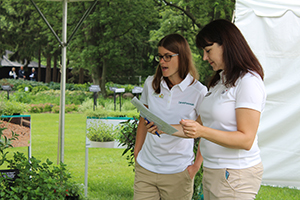
When it's time to find a name, the first thing we do at Darwin Perennials is gather the troops. If you want to increase your chances of finding the perfect name, particularly with a tight timeline, then the more minds you have thinking about it the better!
The Product Development team provides the group with background information on the features and benefits of the plant and where it is likely to fit into the market. This helps the group understand the plant and what we might want to convey with naming it. For instance, if you have a color breakthrough in a particular plant, that is likely to be an important thing to call out in the name.
With that, let’s take a stroll down memory lane and walk through the story behind naming a few of the plants in the Darwin Perennials assortment!
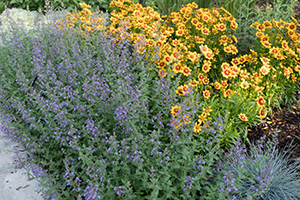
Nepeta Junior Walker
When this plant was in breeding and trials, we were selecting for a more compact version of the industry standard variety called ‘Walker’s Low’ that retained all the flower power of this landscape staple. We found it with Junior Walker. Given that background, the naming strategy becomes clear—we wanted to evoke this established variety while noting that it was a smaller stature plant. It’s a tried-and-true naming tactic that works well because many people will understand the type of plant they are getting from the name alone.
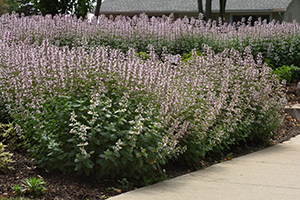
Nepeta Whispurr Pink and Whispurr Blue
So many cat references, so little time! With a common name like Catmint it’s easy to see why the cat references abound with the Nepeta varieties on the market today. The Whispurr series has the cats’ purring their approval, while simultaneously utilizing a trend we’re bound to see more often—the use of misspelled and non-true words. Why do I think these types of names will grow in popularity? Well, it’s simple really: Naming is getting increasingly more challenging as more and more plant varieties are protected each year. There are quite a few occasions when you think you’ve come up with the perfect name, only to find that someone else came up with it first (or something similar enough that it doesn’t pass the patent and trademark search)!
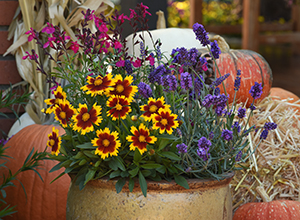
Coreopsis UpTick series
This is another case of playfully calling out the common name for a genus. However, this one strikes me as notable in that I’m impressed with how the team was able to take lemons and made lemonade. To me, there is nothing particularly appealing about the common name of Coreopsis, which is Tickseed. In fact, it seems like one of those unfortunate choices that could use a little bit of rebranding by the industry. Regardless, UpTick brings a positive spin to the table by eluding to the increased consumer appeal that has set this series on an upward trend.
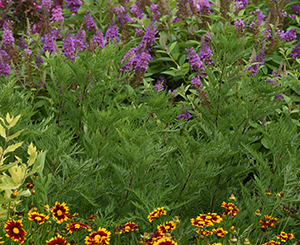
Artemisia SunFern
In perhaps one of our most dramatic examples, a good name can be the difference between introducing a new product or stalling out. In this case, it was the name that really got the entire product advancement team to rally behind this launch. While in our annual product advancement meeting, we were going over the features and benefits of these Artemisia codes and discussing where this might fit in our product assortment. A green foliage item is not exactly our main wheelhouse, so understandably there were some people on the fence about moving forward. However, I think many of us realized the value of fern-like foliage for a full sun environment and continued to push the discussion forward.
Then a sales representative in the group said we could call them “sun ferns”, and at that moment everything clicked into place. Suddenly everyone was on board, and there was talk about custom tags and additional marketing support. The passion of the product development team and the creativity of our sales representative tipped the scales, and the rest as they say is history!
This is the time of year where we have just wrapped up naming our new introductions for 2024. Like usual, we had some varieties that were easy to name, others that created great debates within the team, and that one that took many attempts before success as our ideas kept running into roadblocks in the patent and trademark searches. That said, we have an exciting line up that we can’t wait to introduce you to in the coming months—the future is looking bright!